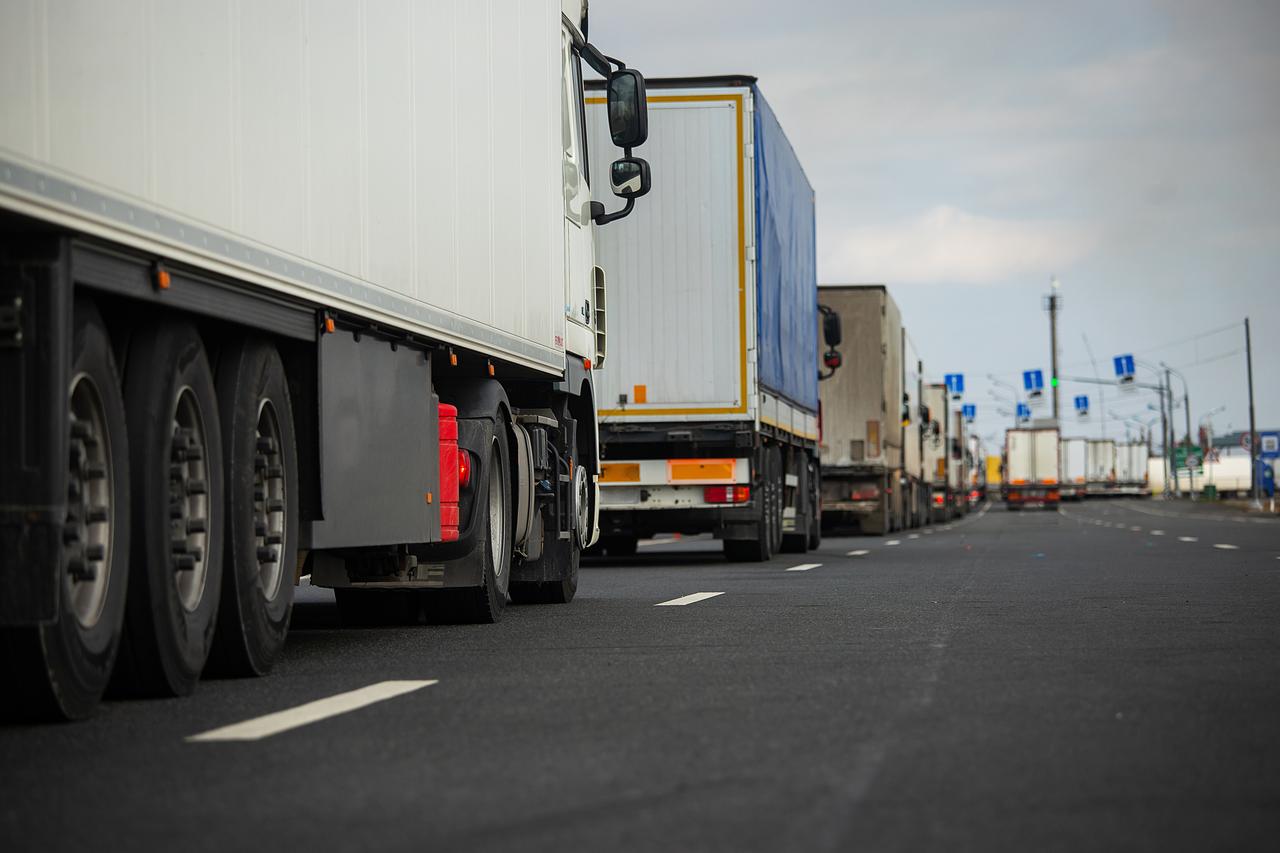Over the course of what was a thrilling discussion, Kuehne+Nagel’s customs experts—namely Marc Bernitt, Senior Vice President Customs Europe and Tom Vindevogel, Customs Specialist, Local Trade Control Manager NL— explored the following key topics:
- Why CBAM: the European Green Deal strategy
- CBAM: the concept behind it explained simply
- The scope of CBAM: who, what, when and how?
- Get prepared: this is what you should do now
With more details of CBAM being released, it is highly recommended that companies keep a close eye on developments and take action by adopting more sustainable supply chains.
Ready to unravel CBAM? Start off by watching our webinar recording and don’t miss out on reading our experts’ answers to the audience's questions.
CBAM Follow-Up Questions
Scope

 Is CBAM also relevant for small companies?
Is CBAM also relevant for small companies?
Yes. CBAM is applicable to all importers that import products under the CBAM scope, regardless of their size.

 Will I not be affected as long as I store CBAM goods in a bonded warehouse?
Will I not be affected as long as I store CBAM goods in a bonded warehouse?
Correct. As long as your CBAM goods remain under tax and duties exemption, you are exempt from CBAM. However, as goods exit the warehouse facility and are released for free circulation—in short, the time of import into the European Customs Union—whoever is acting as the CBAM declarant needs to account for them. This is not the case when re-exporting goods out of the bonded warehouse into non-EU countries.

 Does the €150 threshold for CBAM exemption apply per shipment or per quarter, or does another measurement apply?
Does the €150 threshold for CBAM exemption apply per shipment or per quarter, or does another measurement apply?
The de minimis exemption applies to goods with a value that does not exceed €150 for all CBAM goods per consignment.

 Will non-EU exporters be expected to calculate carbon emissions?
Will non-EU exporters be expected to calculate carbon emissions?
It is expected that installation operators in third countries supply the CBAM declarant with the information required to submit the CBAM report. Whether the shared data consists of pre-calculated emissions, or if the importer should calculate it themselves, depends on the agreements between the involved parties. The European Commission has published a guidance document specifically for installation operators, as well as a communication template that can be found on the European Commission’s website under the “Guidance” section, to facilitate the exchange of information. However, consider it the legal obligation of the importer to comply with the CBAM regulation, and not that of the installation operator.

 Do we need to adhere to CBAM's reporting requirements when importing into the UK?
Do we need to adhere to CBAM's reporting requirements when importing into the UK?
CBAM is strictly an EU policy. It does not apply to imports into the UK.

 Is there a UK equivalent in the pipeline to capture imports into the UK?
Is there a UK equivalent in the pipeline to capture imports into the UK?
Yes. On December 18, 2023, the UK government published a consultation outcome announcing the launch of a UK Carbon Border Adjustment Mechanism as of 2027. More information can be found on the gov.uk website.

 Are imports from Turkey impacted by CBAM?
Are imports from Turkey impacted by CBAM?
The CBAM regulation applies to products imported from Turkey, into the EU.
Reporting

 Which data needs to be included in the CBAM reports?
Which data needs to be included in the CBAM reports?
The European Commission recently published a user manual for the CBAM Transitional Registry, as well as a sample of a quarterly report. The user manual provides details on the format of the information that needs to be submitted.
As to what exactly needs to be reported, it is slightly different per product category. In broad terms, it includes:
- Quantity of imports per customs procedure
- CN codes of the imported goods
- Country of origin
- Details of the installation of production
- Direct embedded emissions
- Indirect embedded emissions
- Carbon price due in country of origin
More detailed specifications can be found on the European Commission’s website under the “Guidance” section.

 How will the EU ensure reporting is fully confidential?
How will the EU ensure reporting is fully confidential?
The CBAM Transitional Registry is a secure electronic database. All information in the CBAM registry will be confidential, except for the names, addresses, and contact information of the operators and the location of installations in third countries. However, an operator may choose not to have its name, address and contact information made accessible to the public.

 How does the default value for emission reporting work, and are the values already available?
How does the default value for emission reporting work, and are the values already available?
On December 22, 2023, the Commission published the default values for the CBAM transitional period which can be found on the European Commission’s website under the “Guidance” section.

 As a distributor, will I need to reach out to all my suppliers to obtain information on the carbon emissions embedded in my imported goods?
As a distributor, will I need to reach out to all my suppliers to obtain information on the carbon emissions embedded in my imported goods?
As a distributor you will indeed need to obtain this information from all your suppliers. On the European Commission’s website, importers, but also third country operators, can find guidance documents, a communication template, and checklists to aid in collecting and supplying the required information. On the Customs & Tax EU Learning Portal, e-learning modules covering sector-specific content will become available soon.
Outlook

 Will CBAM be extended to include other sectors in the future? What about high-tech?
Will CBAM be extended to include other sectors in the future? What about high-tech?
It is expected that products currently covered by the Emission Trading Scheme (ETS) will be added to CBAM. That will happen around 2030-2032. High-tech will most likely be included too.
Scenarios

 Goods are imported into the EU from Asia on a specific date. Shortly after, they are exported to and imported into the UK. Sometime later, those goods are then sold and exported from the UK and imported into the EU again. Do we still need to have a certificate and report on these?
Goods are imported into the EU from Asia on a specific date. Shortly after, they are exported to and imported into the UK. Sometime later, those goods are then sold and exported from the UK and imported into the EU again. Do we still need to have a certificate and report on these?
Yes. Two situations might apply in this scenario, and in both cases CBAM reporting is necessary.
A. No substantial transformation in the UK—if the imported goods were not subject to any substantial, economically justified processing or working, the goods will retain their Asian origin.
B. Substantial transformation in the UK—if it is the case the products were processed and obtained the UK origin according to the non-preferential rules of origin, the reporting obligation still applies. The UK does not participate in EU ETS, and therefore is not exempted from CBAM regulation.

 Who is affected? Company A, located in the EU, buys bolts from Company B, located in the EU. Company B, in turn, buys the bolts from Company C based outside the EU. Is Company A affected by the CBAM regulations? Or does it only affect Company B?
Who is affected? Company A, located in the EU, buys bolts from Company B, located in the EU. Company B, in turn, buys the bolts from Company C based outside the EU. Is Company A affected by the CBAM regulations? Or does it only affect Company B?
The importer of records will be the CBAM declarant and is responsible for complying with the CBAM measures. Who will act as importer of records will depend on the mutual agreements between the companies involved.
Our support

 Is Kuehne+Nagel able to support the declaration due January 2024?
Is Kuehne+Nagel able to support the declaration due January 2024?
Whilst it is the importer’s responsibility to submit the intricate CBAM reports, Kuehne+Nagel will be happy to provide the required import data (CN codes, country of origin, volumes, date of entry) as well as customs consultancy to assist companies on the CBAM regulations.



.jpg/9370f711-3608-d4c8-9ef2-72345cf25e2b)


.jpg/dc2b570f-3f74-202e-d3b2-8dba99330132)



